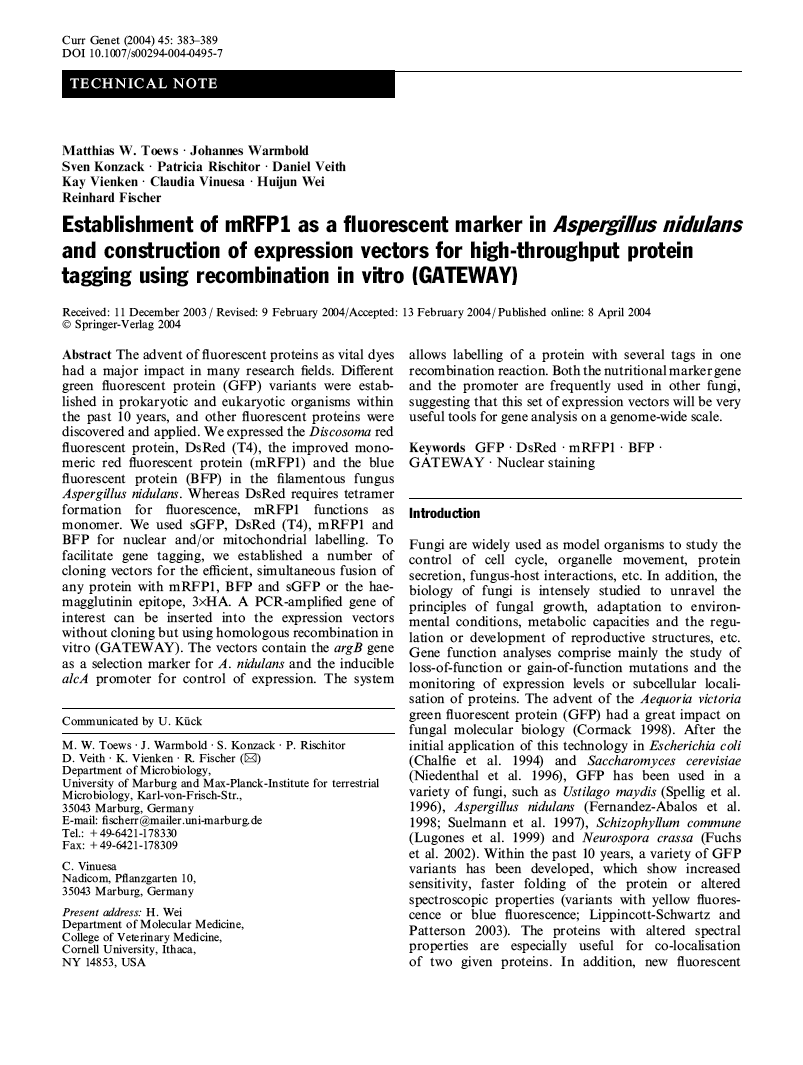Toews et al. 2004
Establishment of mRFP1 as a fluorescent marker in Aspergillus nidulans and construction of expression vectors for high-throughput protein tagging using recombination in vitro (GATEWAY). Curr. Genet., 45:883-889.
Toews, M.W., Warmbold, J., Konzack, S., Rischitor, E.P., Veith, D., Vinuesa, C., Vienken, K., Wei, H. & Fischer, R.
Abstract
The advent of fluorescent proteins as vital dyes had a major impact in many research fields. Different green fluorescent protein (GFP) variants were established in prokaryotic and eukaryotic organisms within the past 10 years, and other fluorescent proteins were discovered and applied. We expressed the Discosoma red fluorescent protein, DsRed (T4), the improved monomeric red fluorescent protein (mRFP1) and the blue fluorescent protein (BFP) in the filamentous fungus Aspergillus nidulans. Whereas DsRed requires tetramer formation for fluorescence, mRFP1 functions as monomer. We used sGFP, DsRed (T4), mRFP1 and BFP for nuclear and/or mitochondrial labelling. To facilitate gene tagging, we established a number of cloning vectors for the efficient, simultaneous fusion of any protein with mRFP1, BFP and sGFP or the haemagglutinin epitope, 3xHA. A PCR-amplified gene of interest can be inserted into the expression vectors without cloning but using homologous recombination in vitro (GATEWAY). The vectors contain the argB gene as a selection marker for A. nidulans and the inducible alcA promoter for control of expression. The system allows labelling of a protein with several tags in one recombination reaction. Both the nutritional marker gene and the promoter are frequently used in other fungi, suggesting that this set of expression vectors will be very useful tools for gene analysis on a genome-wide scale.

